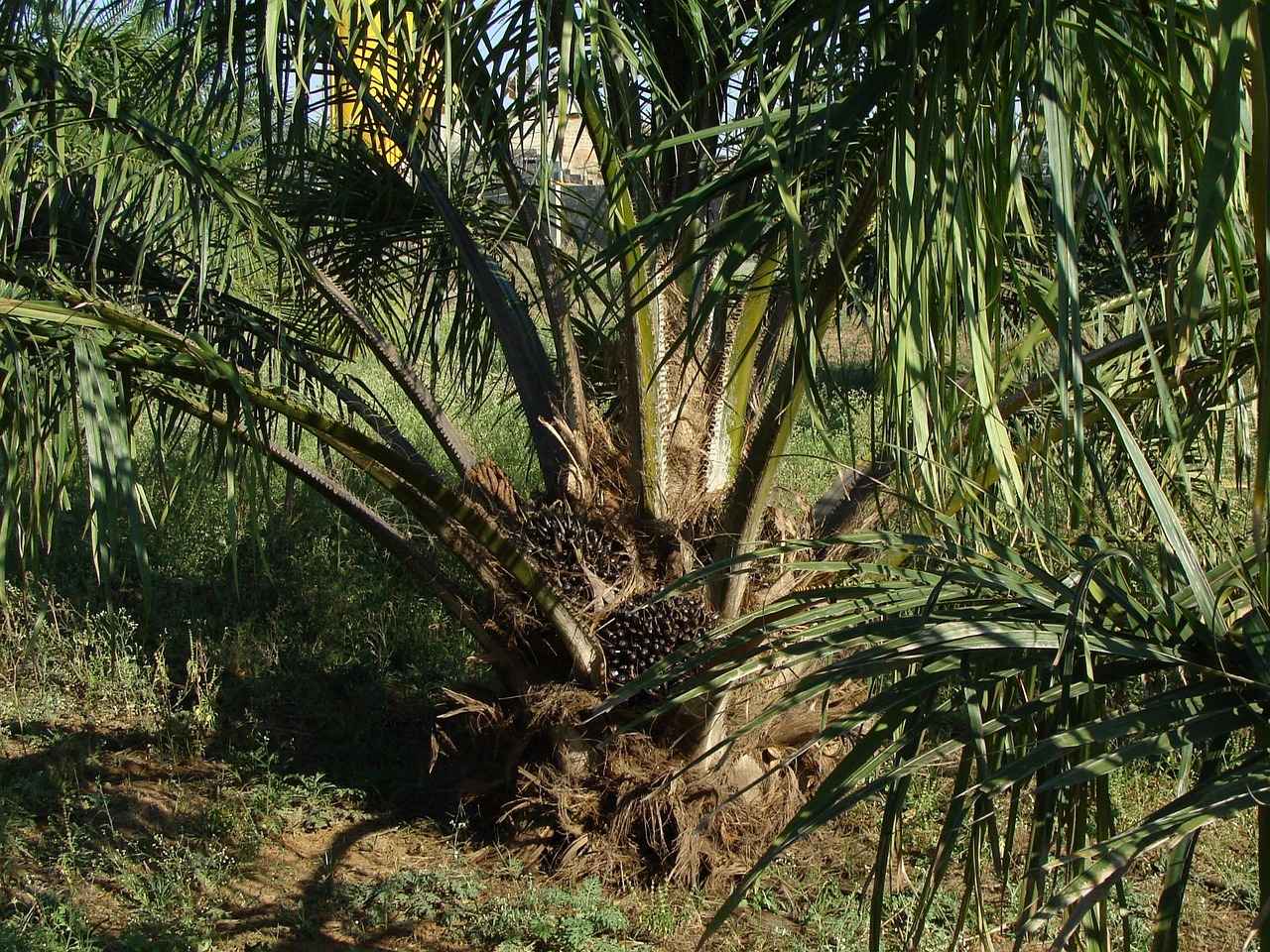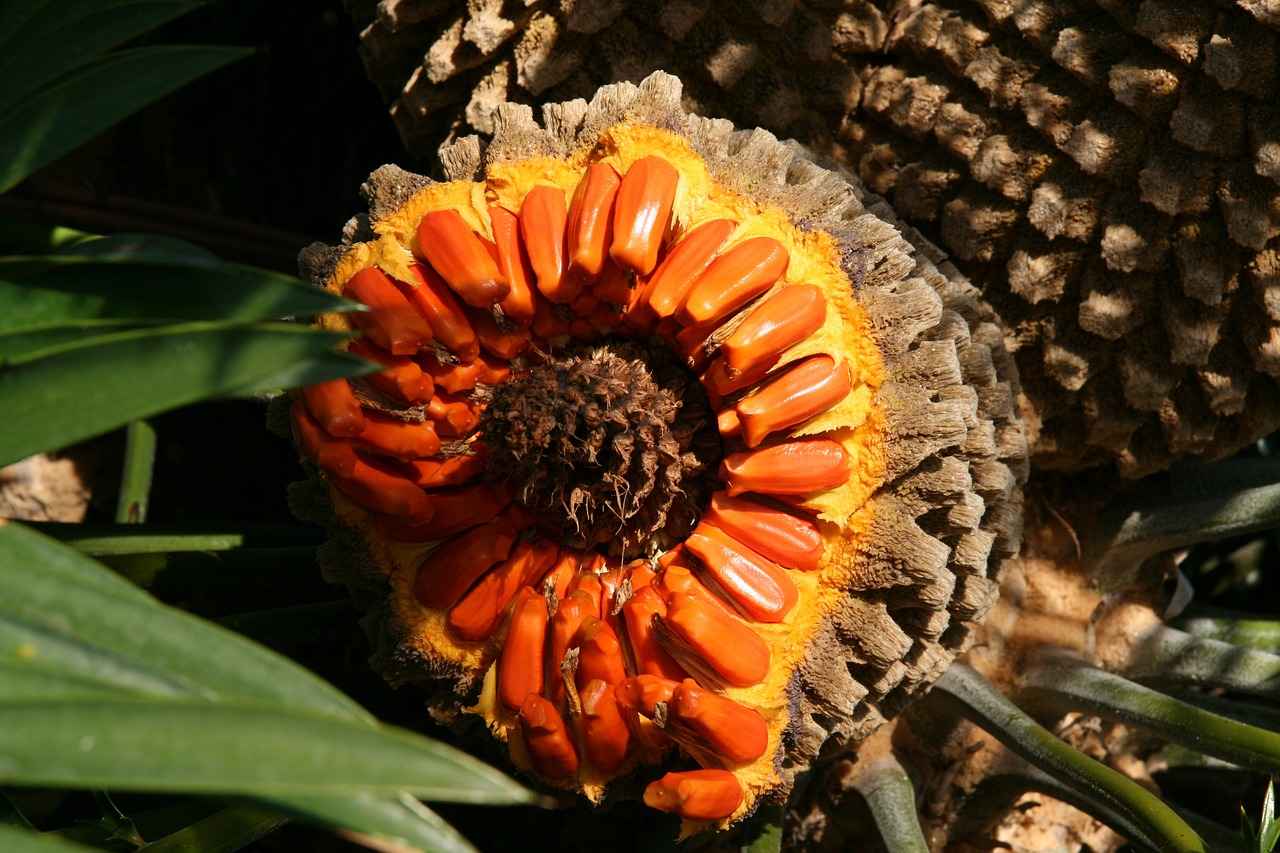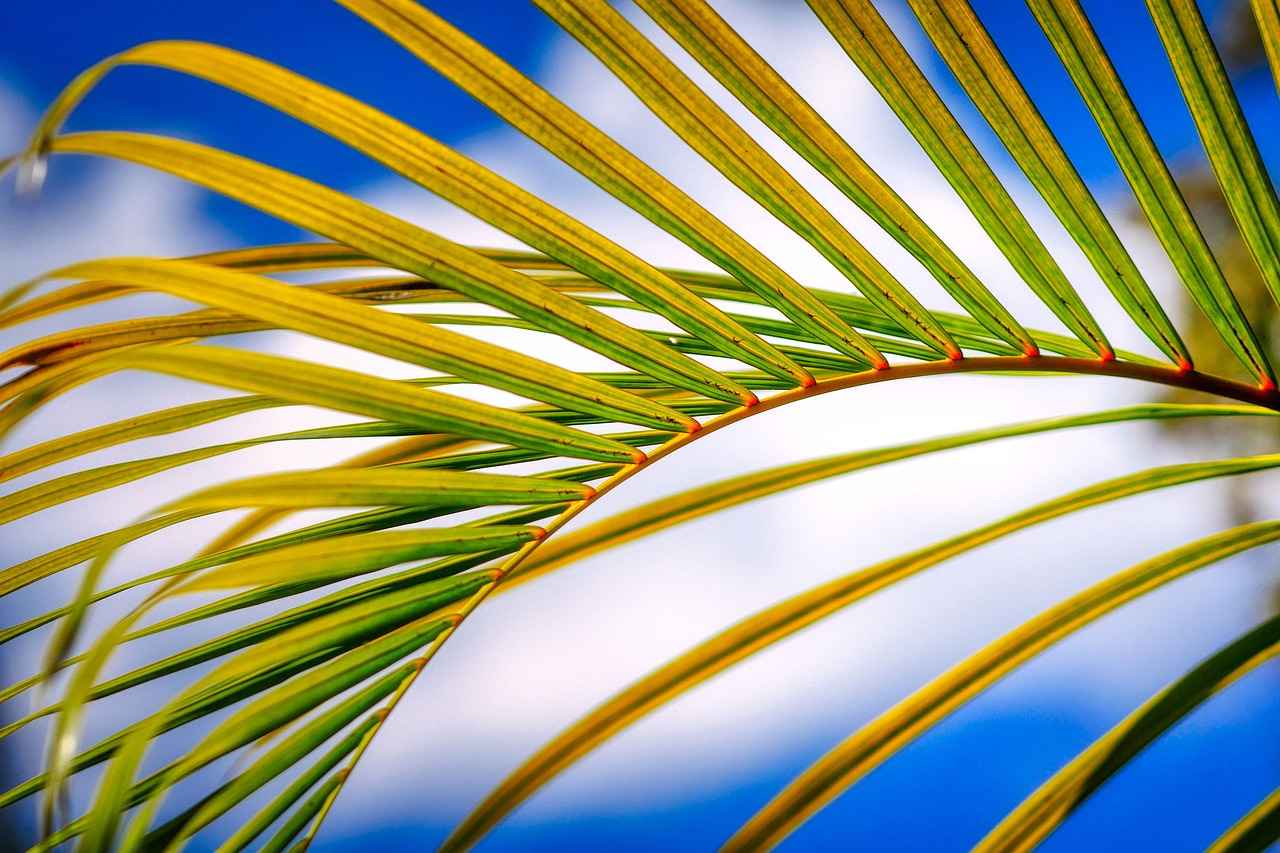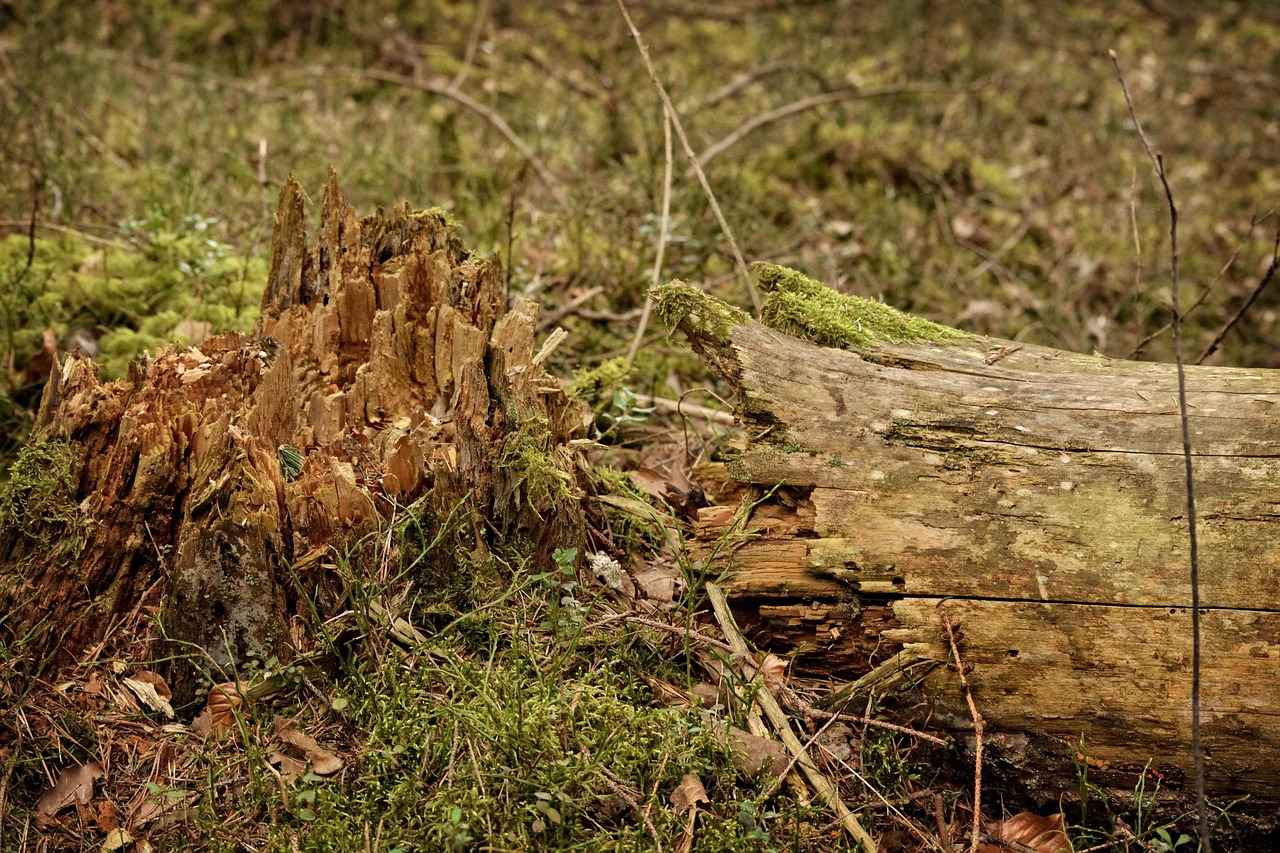How Long Does It Take a Palm Tree to Grow? Understanding the growth rates of palm trees is essential for anyone interested in landscaping or gardening. These iconic trees are not only beautiful but can also enhance the value of your property. In this article, we will delve into the various factors that influence the growth rates of palm trees, offering insights into their development and the time it takes for them to mature.
Several key factors significantly impact the growth rates of palm trees:
- Species Type: Different species of palm trees have varying growth rates. Some are fast-growing, while others take decades to reach their full height.
- Climate Conditions: Palm trees thrive in warm, tropical climates. Temperature and humidity levels play a crucial role in their growth.
- Soil Quality: The type of soil and its drainage capabilities can either promote or hinder growth. Well-drained soil is essential.
- Water Availability: Adequate watering is vital. Both overwatering and underwatering can lead to stunted growth or even death.
Understanding the growth rates of various palm species helps in selecting the right tree for your landscape:
- Fast-Growing Species: The Royal Palm and the Mexican Fan Palm are known for their rapid growth. Under optimal conditions, these trees can reach impressive heights in just a few years.
- Royal Palm: This majestic tree can grow up to 50 feet tall in about 10-15 years when planted in ideal conditions.
- Mexican Fan Palm: Known for its height, it can reach up to 100 feet within 15-20 years, making it a favorite in many landscapes.
- Slow-Growing Species: On the other hand, species like the Sago Palm and Pindo Palm take much longer to mature, often requiring decades.
Palm trees flourish in specific environmental conditions:
- Sunlight: Most palm species require at least six hours of direct sunlight daily. Sunlight is crucial for photosynthesis, which fuels their growth.
- Soil Quality: Well-draining soil is essential. Amending soil with organic matter can enhance drainage and nutrient availability, promoting healthy growth.
Watering practices are vital for the healthy development of palm trees:
- Watering Frequency: Young palm trees typically need watering once or twice a week, depending on rainfall and soil conditions.
- Signs of Overwatering and Underwatering: Recognizing symptoms like yellowing fronds or wilting leaves can help maintain the health of your palm trees.
Palm trees can face several growth challenges:
- Pest Issues: Common pests such as palm weevils and scale insects can hinder growth. Regular monitoring and pest control measures are essential.
- Disease Management: Diseases like Ganoderma and Fusarium wilt can devastate palm populations. Early identification of symptoms and preventive measures are crucial for maintaining healthy trees.
In summary, understanding the growth rates of palm trees involves considering various factors such as species type, environmental conditions, and proper care practices. By paying attention to these elements, you can ensure that your palm trees thrive and contribute to a beautiful landscape for years to come.

What Factors Influence Palm Tree Growth Rates?
Understanding the growth rates of palm trees is essential for anyone looking to cultivate these beautiful plants. Various factors significantly influence how quickly and healthily palm trees grow. In this section, we will delve into the key elements that affect their growth rates, including species type, climate conditions, soil quality, and water availability.
Several environmental and biological factors impact the growth rates of palm trees. These factors not only determine how quickly a palm tree will grow but also influence its overall health and longevity.
- Species Type: Different species of palm trees exhibit varying growth rates. Some species, such as the Royal Palm and the Mexican Fan Palm, are known for their rapid growth, while others, like the Sago Palm, are much slower to mature.
- Climate Conditions: Climate plays a crucial role in the growth of palm trees. Most palms thrive in warm, tropical, or subtropical climates. Adequate sunlight and mild temperatures are essential for optimal growth.
- Soil Quality: The quality of the soil in which a palm tree is planted can significantly impact its growth. Well-draining soil rich in organic matter promotes healthy root development, while poor soil can stunt growth.
- Water Availability: Water is vital for palm tree growth. Adequate watering practices, taking into account rainfall and soil moisture, are necessary to prevent stress and promote healthy growth.
In addition to these primary factors, other elements such as nutrient availability, pests, and disease can also affect the growth rates of palm trees. For instance, nutrient deficiencies can lead to stunted growth and poor health, while pest infestations can damage the foliage and roots.
Climate conditions are a significant determinant of palm tree growth. Most palm species require a minimum temperature to thrive, and prolonged exposure to cold can damage or kill them. Additionally, humidity levels can influence growth rates, as palms generally prefer higher humidity.
For optimal growth, palm trees typically need:
- At least 6 hours of direct sunlight daily.
- A temperature range of 70°F to 90°F for most species.
- Moderate to high humidity levels to prevent stress.
Soil quality is another critical factor influencing palm tree growth. Well-drained soil prevents waterlogging, which can lead to root rot, a common problem for palm trees. Soil that is too compacted can hinder root development, while sandy soils may not retain sufficient moisture.
To enhance soil quality, consider:
- Amending soil with organic matter to improve drainage and nutrient content.
- Testing soil pH to ensure it is within the ideal range for palm trees, typically between 6.0 and 7.5.
Proper watering practices are vital for the healthy development of palm trees. Young palms, in particular, require consistent moisture to establish their root systems. However, overwatering can be just as detrimental as underwatering.
To maintain healthy growth, consider the following:
- Water young palm trees once or twice a week, adjusting based on rainfall and soil conditions.
- Monitor for signs of overwatering, such as yellowing fronds, and underwatering, like wilting leaves.
By understanding these factors, gardeners and landscapers can create the ideal environment for palm trees to thrive, ensuring their growth is both healthy and robust.

How Fast Do Different Palm Tree Species Grow?
When considering the growth rates of palm trees, it is essential to understand that these rates can vary significantly among different species. This variation is influenced by numerous factors, including environmental conditions, genetic predisposition, and care practices. By recognizing these differences, you can make informed decisions about which palm species to choose for your landscape and manage your expectations regarding their growth timelines.
The growth rates of palm trees are influenced by a combination of biological and environmental factors. Each species has unique characteristics that dictate how quickly it can grow. For instance, some palms are genetically predisposed to grow faster than others, while factors such as climate, soil quality, and water availability also play critical roles in their development.
Among the various species, some palms are renowned for their rapid growth. For example, the Royal Palm and the Mexican Fan Palm can reach impressive heights in a relatively short period.
- Royal Palm: This species is not only admired for its stunning appearance but also for its fast growth rate. Under optimal conditions, it can achieve heights of up to 50 feet within 10 to 15 years.
- Mexican Fan Palm: Thriving in warm climates, this palm can grow up to 100 feet tall, often reaching its full height in about 15 to 20 years, making it a popular choice for landscaping.
On the other end of the spectrum, some palm species grow much more slowly. The Sago Palm and the Pindo Palm are examples that may take decades to reach their full height and size.
- Sago Palm: Despite its name, the Sago Palm is not a true palm but is often included in this category. It has a slow growth rate and can take many years to mature.
- Pindo Palm: Known for its resilience, the Pindo Palm grows slowly and may take 20 to 30 years to reach its maximum height.
To promote healthy growth in palm trees, specific environmental conditions must be met. Factors such as adequate sunlight, humidity, and well-drained soil are crucial.
- Sunlight: Most palm species thrive in full sun, requiring at least six hours of direct sunlight daily to optimize their growth.
- Soil Quality: Well-draining soil is essential, as excessive moisture can lead to root rot. Amending soil with organic matter can improve drainage and nutrient availability.
Proper watering practices are vital for the growth of palm trees. Understanding their water requirements can help ensure healthy development and prevent issues related to over or under-watering.
- Watering Frequency: Young palm trees typically require consistent moisture, needing watering once or twice a week, depending on rainfall and soil conditions.
- Signs of Watering Issues: Recognizing the signs of overwatering, such as yellowing fronds, or underwatering, like wilting leaves, is essential for maintaining palm health.
Palm trees can encounter various growth challenges, including pests, diseases, and environmental stressors. Understanding these challenges is crucial for effective management.
- Pest Issues: Common pests such as palm weevils and scale insects can hinder growth. Regular monitoring and appropriate pest control measures are necessary.
- Disease Management: Diseases like Ganoderma and Fusarium wilt can severely impact palm populations. Early identification of symptoms and preventive measures are vital for maintaining healthy trees.
Fast-Growing Species of Palm Trees
Palm trees are not just beautiful; they are also fascinating in their growth patterns. Among the various species, some exhibit remarkably fast growth rates, making them popular choices for landscaping and gardens. This section delves into two of the most notable fast-growing palm species: the Royal Palm and the Mexican Fan Palm.
The Royal Palm (Roystonea regia) is renowned for its stunning stature and rapid growth. Under optimal conditions, these palms can achieve heights of up to 50 feet within a span of 10 to 15 years. Their tall, slender trunks and feathery fronds create a striking silhouette that enhances any landscape.
- Growing Conditions: Royal Palms thrive in warm, tropical climates with plenty of sunlight and well-drained soil.
- Water Requirements: These palms prefer consistent moisture but are sensitive to waterlogging, making proper drainage essential.
- Maintenance: Minimal maintenance is required, but regular fertilization can promote even faster growth.
The Mexican Fan Palm (Washingtonia robusta) is another fast-growing species, often reaching heights of up to 100 feet in just 15 to 20 years. Its fan-shaped leaves and impressive height make it a favorite for urban landscaping and parks.
- Ideal Climate: This palm thrives in hot, arid climates and can tolerate drought conditions once established.
- Growth Rate: Under ideal conditions, the Mexican Fan Palm can grow up to 3 feet per year, making it one of the fastest-growing palms.
- Care Tips: Regular watering is crucial during the establishment phase, but mature trees require less frequent watering.
| Species | Height at Maturity | Years to Maturity | Growth Rate |
|---|---|---|---|
| Royal Palm | Up to 50 feet | 10-15 years | Moderate to Fast |
| Mexican Fan Palm | Up to 100 feet | 15-20 years | Fast |
In summary, the Royal Palm and Mexican Fan Palm are excellent choices for those looking to add fast-growing palms to their landscapes. Their rapid growth not only provides immediate aesthetic value but also contributes to creating a lush, tropical environment. When selecting a palm, consider the specific growing conditions and maintenance needs to ensure optimal growth and health.
Royal Palm: Characteristics and Growth Rate
The Royal Palm is renowned for its stunning appearance and rapid growth, making it a favored choice among landscapers and homeowners alike. This palm species, scientifically known as Roystonea regia, is native to the tropical regions of the Americas, particularly the Caribbean. Its tall, slender trunk and feathery crown of fronds contribute to its majestic presence, often serving as a focal point in gardens and parks.
One of the most striking features of the Royal Palm is its height. Under optimal conditions, it can grow to reach heights of up to 50 feet within a span of just 10 to 15 years. This rapid growth rate is influenced by several key factors:
- Climate: The Royal Palm thrives in warm, tropical climates, where temperatures remain consistently above 60°F.
- Soil Quality: Well-draining soil enriched with organic matter supports healthy root development.
- Water Availability: Adequate moisture is essential, particularly during the early growth stages.
To achieve the best results with Royal Palms, it’s crucial to provide the right conditions:
- Sunlight: Ensure they receive at least 6 hours of direct sunlight each day to promote vigorous growth.
- Watering: Young Royal Palms require regular watering, especially during dry spells. A deep watering once or twice a week is generally sufficient.
- Fertilization: Applying a balanced fertilizer during the growing season can enhance growth and overall health.
Despite their robust nature, Royal Palms are not immune to challenges. Some common issues include:
- Pests: Watch for pests like palm weevils and scale insects, which can damage the fronds and hinder growth.
- Diseases: Conditions such as Ganoderma and Fusarium wilt can pose significant threats. Regular inspections can help catch these problems early.
Beyond their growth rate, Royal Palms offer numerous aesthetic benefits:
- Visual Appeal: Their tall stature and elegant fronds create a dramatic effect in any landscape.
- Shade: Mature Royal Palms provide ample shade, making them ideal for patios and outdoor spaces.
- Versatility: They can be used in various landscaping designs, from tropical gardens to urban settings.
In summary, the Royal Palm is a remarkable species that combines beauty with rapid growth. By understanding its specific needs and potential challenges, gardeners can cultivate these magnificent trees successfully, enhancing the beauty and value of their outdoor spaces.
Mexican Fan Palm: Ideal Growing Conditions
The Mexican Fan Palm (Washingtonia robusta) is a stunning addition to any landscape, particularly in regions with warm climates. Known for its impressive height and unique fan-shaped leaves, this palm is a favorite among homeowners and landscapers alike. Understanding the ideal growing conditions for the Mexican Fan Palm is essential for ensuring its healthy growth and longevity.
The Mexican Fan Palm thrives in warm climates, typically found in USDA hardiness zones 8-11. It flourishes in areas with plenty of sunshine and can tolerate a range of temperatures, but it prefers temperatures between 70°F and 100°F. This palm is drought-tolerant once established, making it suitable for regions with limited rainfall.
Soil quality plays a vital role in the growth of the Mexican Fan Palm. It prefers well-draining soil that is rich in organic matter. The ideal soil pH ranges from 6.0 to 7.5. Heavy clay soils can retain too much moisture, which may lead to root rot. To improve drainage, consider amending the soil with sand or perlite.
When establishing a Mexican Fan Palm, consistent watering is crucial. Young palms should be watered deeply once or twice a week until they are well established. After that, they can tolerate periods of drought. However, during prolonged dry spells, it’s important to provide additional water to prevent stress on the tree.
Sunlight is essential for the healthy growth of the Mexican Fan Palm. This species thrives in full sun and requires at least 6 to 8 hours of direct sunlight each day. Insufficient sunlight can lead to weak growth and reduced vigor.
To promote healthy growth, the Mexican Fan Palm benefits from regular fertilization. A balanced, slow-release fertilizer should be applied in the spring and summer months. Look for fertilizers high in potassium, as this nutrient is essential for palm health. Follow the manufacturer’s instructions for application rates.
While the Mexican Fan Palm is relatively resilient, it can be affected by certain pests and diseases. Common pests include scale insects and palm weevils, which can weaken the tree if not managed promptly. Regular monitoring and appropriate pest control measures are essential for maintaining a healthy palm.
Pruning is an important aspect of caring for the Mexican Fan Palm. Remove dead or damaged fronds to enhance the tree’s appearance and promote airflow. However, avoid excessive pruning, as this can stress the tree and hinder its growth.
In summary, the Mexican Fan Palm is a magnificent tree that thrives under specific conditions. By providing adequate sunlight, well-draining soil, and proper watering and fertilization, you can ensure that your Mexican Fan Palm grows to its full potential. With the right care, this palm can reach heights of up to 100 feet within 15-20 years, making it a stunning centerpiece in any landscape.
Slow-Growing Species of Palm Trees
When it comes to the growth of palm trees, not all species are created equal. Slow-growing palm species present unique characteristics and challenges for gardeners and landscapers. Among these species, the Sago Palm and the Pindo Palm stand out for their notably gradual growth rates. Understanding these palms is essential for anyone considering them for their landscape.
The Sago Palm, despite its name, is not a true palm but rather a cycad. This species is known for its slow growth, often taking several decades to reach its full height of around 10 feet. Factors contributing to this slow growth include:
- Climate Sensitivity: Sago Palms thrive in warm climates, but they are sensitive to extreme cold, which can stunt their growth.
- Soil Requirements: They prefer well-drained, sandy soils, and poor soil quality can significantly hinder their growth.
- Water Needs: Overwatering can lead to root rot, further slowing their development.
The Pindo Palm, also known as the Jelly Palm, is another slow-growing species. It can take 15 to 30 years to achieve its maximum height of around 25 feet. Key factors influencing the growth rate of the Pindo Palm include:
- Growth Environment: Pindo Palms thrive in well-drained soils and full sunlight, but they can tolerate some shade.
- Temperature Sensitivity: They are tolerant of cold but grow best in warmer climates, which can affect their growth rate.
- Nutrient Availability: Regular fertilization can enhance growth, but too much can lead to nutrient burn.
While slow-growing palm trees may require more patience, they offer unique benefits:
- Longevity: These palms often live longer than their fast-growing counterparts, providing enduring beauty to your landscape.
- Low Maintenance: Their slower growth means less frequent pruning and care, making them ideal for low-maintenance gardens.
- Aesthetic Appeal: Both the Sago and Pindo Palms have striking appearances that can enhance the visual appeal of any garden.
Caring for slow-growing palms like the Sago and Pindo requires specific practices to optimize their growth:
- Watering: Ensure consistent moisture without overwatering. Allow the soil to dry out between waterings.
- Fertilization: Use a balanced fertilizer during the growing season to promote healthy growth.
- Protection from Pests: Regularly inspect for pests such as scale and mealybugs, which can affect growth.
In summary, slow-growing palm species like the Sago Palm and Pindo Palm offer unique characteristics that can enhance any landscape. While they require patience and specific care, their longevity, low maintenance, and aesthetic appeal make them worthwhile additions to gardens. Understanding their growth patterns and care requirements is essential for successful cultivation.

What Environmental Conditions Promote Healthy Growth?
Palm trees are not just a symbol of tropical paradises; they are also fascinating plants that require specific environmental conditions to thrive. Understanding these conditions is crucial for anyone interested in cultivating palm trees, whether for landscaping or personal enjoyment. This article will delve into the essential factors that promote healthy growth in palm trees, ensuring they flourish in your garden or landscape.
Palm trees thrive in environments that provide the right balance of sunlight, humidity, and soil quality. These factors not only influence their growth rates but also determine their overall health and resilience against diseases.
Sunlight is a critical component for the photosynthesis process, which is essential for the growth of palm trees. Most palm species prefer full sun exposure, requiring at least six hours of direct sunlight daily. Insufficient sunlight can lead to stunted growth and weakened plants.
- Optimal Sunlight: Choose a location that allows for maximum sun exposure.
- Shade Tolerance: Some species, like the Lady Palm, can tolerate partial shade but will grow slower.
Humidity is another vital factor influencing the health of palm trees. Most palm species thrive in humid environments, as they are native to tropical and subtropical regions. Adequate humidity levels help in reducing transpiration, allowing palms to retain moisture.
- Ideal Humidity Levels: Aim for humidity levels between 50% and 70% for optimal growth.
- Humidity Solutions: In drier climates, consider using misting systems or humidifiers to maintain appropriate moisture levels.
Soil quality significantly impacts the growth and health of palm trees. Well-drained soil is essential, as excess moisture can lead to root rot, a common issue among palms. The ideal soil should be rich in organic matter, which enhances drainage and nutrient availability.
- Soil Composition: A mixture of sand, loam, and organic compost is ideal for palm growth.
- Drainage Solutions: If your soil retains too much water, consider amending it with perlite or sand to improve drainage.
Proper watering practices are vital for the successful growth of palm trees. Understanding their specific water requirements can help prevent common issues associated with over or under-watering.
- Watering Frequency: Young palm trees typically require watering once or twice a week, depending on rainfall and soil conditions.
- Signs of Water Stress: Watch for yellowing fronds (overwatering) or wilting leaves (underwatering) to adjust your watering schedule accordingly.
Palm trees can face various challenges that may hinder their growth, including pests and diseases. Understanding these challenges is crucial for effective management and care.
- Pest Management: Regularly inspect your palms for pests like palm weevils and scale insects, which can damage foliage and stunt growth.
- Disease Prevention: Be vigilant for signs of diseases such as Ganoderma and Fusarium wilt, which can severely affect palm health.
In conclusion, ensuring that palm trees receive adequate sunlight, humidity, and well-drained soil is key to promoting healthy growth. By understanding these environmental conditions and addressing potential challenges, you can cultivate thriving palm trees that enhance the beauty of your landscape.
The Importance of Sunlight for Palm Trees
Sunlight plays a pivotal role in the growth and health of palm trees. As primary producers, palm trees rely on the process of photosynthesis to convert sunlight into energy, which fuels their growth and development. Understanding the significance of sunlight can help you cultivate a thriving palm tree in your landscape.
Most palm species require full sun exposure, which means they need at least six hours of direct sunlight daily. This exposure is essential for optimal growth and overall health. Without sufficient sunlight, palm trees may exhibit stunted growth, poor foliage development, and increased susceptibility to diseases.
During photosynthesis, palm trees absorb sunlight through their leaves, converting it into chemical energy. This energy is vital for various physiological processes, including:
- Growth: Sunlight directly influences the rate at which palm trees grow, impacting their height and biomass accumulation.
- Flowering and Fruiting: Adequate sunlight enhances the production of flowers and fruits, which are essential for reproduction.
- Leaf Health: Sufficient sunlight promotes healthy leaf development, which is crucial for maximizing photosynthesis.
When palm trees do not receive adequate sunlight, they may face several challenges:
- Stunted Growth: Limited sunlight can hinder growth, resulting in shorter and weaker trees.
- Yellowing Leaves: Insufficient light often leads to chlorosis, where leaves turn yellow due to lack of chlorophyll.
- Pest and Disease Vulnerability: Weak trees are more prone to pests and diseases, as they lack the vigor to resist infestations.
While most palm species enjoy full sun, certain varieties are particularly well-suited for sunny environments:
- Royal Palm: Known for its majestic height, this species flourishes in full sun and can reach impressive heights quickly.
- Mexican Fan Palm: This palm thrives in warm, sunny areas and can grow tall, making it a popular choice for landscaping.
- Date Palm: Preferring arid conditions, this palm species requires ample sunlight to produce sweet, edible fruits.
To promote healthy growth, consider the following tips:
- Plant Location: Choose a planting site that receives full sun exposure, ideally away from taller structures or trees that may cast shade.
- Regular Pruning: Maintain the health of your palm trees by pruning dead or overgrown fronds that may block sunlight.
- Monitor Growth: Keep an eye on your palm trees’ growth patterns. If they appear to be struggling, assess their sunlight exposure.
In summary, sunlight is a fundamental component of palm tree health and growth. By understanding the importance of sunlight and ensuring that your palm trees receive adequate exposure, you can foster a vibrant and thriving landscape. This knowledge not only enhances the beauty of your garden but also contributes to the longevity and resilience of your palm trees.
Soil Quality and Drainage Considerations
When it comes to cultivating healthy palm trees, soil quality and drainage considerations are paramount. These factors not only influence the growth rate of the trees but also their overall health and longevity. Understanding how to create the ideal soil environment can make a significant difference in the success of your palm tree planting.
Well-draining soil is crucial for palm trees, as excessive moisture can lead to root rot, a condition that can devastate these beautiful plants. Palm trees are adapted to thrive in environments where water drains quickly, preventing their roots from sitting in waterlogged conditions. This is particularly important for species that are not tolerant of wet soils.
- Amend with Organic Matter: Incorporating organic materials such as compost, peat moss, or well-rotted manure can enhance soil structure, improving drainage and nutrient availability.
- Use Sand or Perlite: Mixing sand or perlite into the soil can help create a looser texture, allowing for better water movement and air circulation around the roots.
- Consider Raised Beds: Planting palm trees in raised beds can also facilitate better drainage, especially in areas prone to heavy rainfall.
Different palm species have varying soil preferences, but generally, they thrive in sandy or loamy soils with good drainage capabilities. Avoid heavy clay soils that retain water, as they can lead to detrimental conditions for the roots.
In addition to drainage, the availability of nutrients in the soil is vital for the healthy growth of palm trees. A balanced soil with adequate levels of nitrogen, phosphorus, and potassium will support robust growth. Regular soil testing can help determine nutrient levels and guide amendments accordingly.
The pH level of the soil can significantly impact nutrient absorption. Most palm trees prefer a slightly acidic to neutral pH (around 6.0 to 7.0). If the soil is too alkaline, certain nutrients may become unavailable, leading to deficiencies and poor growth.
Recognizing the signs of poor soil quality is essential for timely intervention. Symptoms such as yellowing leaves, stunted growth, and wilting can indicate that the soil may need amendments or improved drainage. Regular monitoring and soil health assessments can help maintain optimal conditions for your palm trees.
- Regular Mulching: Applying a layer of organic mulch can help retain moisture, suppress weeds, and gradually improve soil quality as it decomposes.
- Avoid Over-Fertilization: While nutrients are crucial, over-fertilizing can lead to salt buildup, which can harm palm trees. Use fertilizers judiciously and according to soil test recommendations.
- Water Management: Ensure that watering practices align with the soil’s drainage capabilities to avoid creating overly saturated conditions.
In conclusion, maintaining well-draining soil is essential for the health and growth of palm trees. By understanding the importance of soil quality, improving drainage, and ensuring nutrient availability, you can create an optimal environment for your palm trees to thrive. Regular monitoring and proactive management will lead to vibrant and healthy palms that enhance your landscape.

How Does Watering Affect Palm Tree Growth?
Watering is a fundamental aspect of palm tree care that directly influences their growth and overall health. Understanding the specific water requirements of various palm species is essential for ensuring their robust development. In this section, we will explore how proper watering practices can prevent common issues related to both overwatering and underwatering.
Why Is Proper Watering Important for Palm Trees?
Proper watering practices are vital for the growth of palm trees. These trees have unique water needs that vary based on their species, age, and environmental conditions. Inadequate watering can lead to stress, stunted growth, and even death, while excessive moisture can cause root rot and other diseases. Therefore, understanding their water requirements can help ensure healthy development.
What Are the Water Needs of Palm Trees?
- Young Palm Trees: Newly planted palm trees typically require more frequent watering to establish their root systems. It’s advisable to water them once or twice a week, depending on the climate and soil conditions.
- Mature Palm Trees: Once established, mature palm trees generally need less frequent watering. However, during dry spells, they may still require supplemental watering to thrive.
How to Determine the Right Watering Frequency?
The frequency of watering should be adjusted based on several factors:
- Soil Type: Sandy soils drain quickly and may require more frequent watering, while clay soils retain moisture longer.
- Weather Conditions: During hot, dry periods, palms will need more water, whereas rainy seasons may reduce the need for supplemental watering.
- Tree Age: Younger trees need consistent moisture, while older ones can adapt to varying conditions.
What Are the Signs of Overwatering and Underwatering?
Monitoring the health of your palm trees is crucial for effective watering:
- Overwatering: Signs include yellowing fronds, mushy roots, and a foul smell from the soil. If these symptoms occur, reduce watering immediately.
- Underwatering: Symptoms include wilting leaves, brown tips, and slow growth. If your palm shows these signs, increase watering gradually.
How Can You Improve Water Retention and Drainage?
To optimize watering practices, consider the following:
- Amend Soil: Adding organic matter can improve soil structure, enhancing both water retention and drainage.
- Mulching: Applying a layer of mulch around the base of the palm can help retain moisture and regulate soil temperature.
What Tools Can Help with Watering?
Utilizing the right tools can make watering more efficient:
- Soil Moisture Meter: This tool helps determine the moisture level in the soil, guiding you on when to water.
- Drip Irrigation System: A drip system delivers water directly to the roots, minimizing waste and ensuring consistent moisture levels.
Conclusion
In summary, understanding the water requirements of palm trees is crucial for their growth and health. By implementing proper watering practices and being attentive to the signs of overwatering and underwatering, you can foster a thriving environment for your palms. Remember, each species has its unique needs, so research and adjust your methods accordingly to ensure the best results.
Watering Frequency for Young Palm Trees
Young palm trees are particularly sensitive to their watering needs, requiring a careful balance of moisture to thrive. Understanding how often to water these young plants is essential for their growth and overall health. Typically, young palm trees need to be watered once or twice a week, but this frequency can fluctuate based on various factors such as rainfall, humidity, and soil conditions.
Why is Consistent Moisture Important?
Consistent moisture is vital for young palm trees as it helps establish strong root systems. When young palms are adequately watered, they can absorb necessary nutrients from the soil, promoting healthy growth. Insufficient watering can lead to stress, making the palms more susceptible to diseases and pests.
How Do Rainfall and Soil Conditions Affect Watering Needs?
- Rainfall: In regions with frequent rainfall, the need for manual watering may decrease significantly. It is essential to monitor the weather and adjust your watering schedule accordingly.
- Soil Conditions: The type of soil plays a crucial role in how often you should water. Sandy soils drain quickly and may require more frequent watering, while clay soils retain moisture longer and may need less frequent watering.
Signs of Underwatering and Overwatering
Recognizing the signs of improper watering is crucial for the health of young palm trees. Here are some indicators:
- Underwatering: If the leaves begin to wilt or turn brown, this may indicate that the palm is not receiving enough water.
- Overwatering: Conversely, yellowing fronds and a mushy trunk can signal that the tree is receiving too much water, which can lead to root rot.
Watering Techniques for Optimal Growth
To ensure that young palm trees receive the appropriate amount of water, consider the following techniques:
- Deep Watering: Water deeply but infrequently to encourage deep root growth. This method helps the roots reach down into the soil for moisture.
- Soil Moisture Testing: Use a moisture meter or simply check the soil with your finger. If the top inch of soil is dry, it’s time to water.
- Mulching: Apply a layer of mulch around the base of the palm to retain soil moisture and regulate temperature.
Conclusion
In summary, young palm trees thrive with consistent moisture. Understanding their watering needs, influenced by rainfall and soil conditions, is essential for promoting healthy growth. By recognizing signs of underwatering and overwatering, and employing effective watering techniques, you can ensure your young palms develop into strong, vibrant trees.
Signs of Overwatering and Underwatering
Maintaining the health of palm trees is crucial for their growth and longevity. One of the key aspects of palm care is understanding the signs of overwatering and underwatering. These two conditions can significantly impact the vitality of your palm trees, leading to various health issues if not addressed promptly.
Overwatering is a common problem that can cause serious damage to palm trees. Here are some key indicators to watch for:
- Yellowing Fronds: One of the most noticeable signs of overwatering is the yellowing of the fronds. This discoloration often starts at the lower leaves and can spread upwards.
- Wilting Leaves: Contrary to what one might think, overwatered palms can also exhibit wilting. This is due to root damage caused by excessive moisture.
- Root Rot: If the soil remains soggy for extended periods, it can lead to root rot, which is often fatal. Check for a foul smell emanating from the soil or mushy roots.
- Fungal Growth: The presence of mold or fungus on the soil surface is another sign of overwatering. This can indicate poor drainage and excessive moisture levels.
On the flip side, underwatering can also lead to detrimental effects on palm trees. Here are some signs to look for:
- Wilting Leaves: Underwatered palms often show signs of wilting, especially during hot weather. The leaves may droop or curl, indicating they are not receiving enough moisture.
- Brown Leaf Tips: If the tips of the fronds turn brown and crispy, it is a clear sign that the tree is not getting enough water.
- Stunted Growth: A lack of adequate water can hinder the growth of palm trees, causing them to grow slower than normal.
- Soil Cracking: Dry soil that cracks or pulls away from the edges of the pot or ground can indicate that the palm is not receiving sufficient water.
To ensure your palm trees thrive, it is essential to establish a proper watering routine:
- Check Soil Moisture: Before watering, check the soil moisture level by sticking your finger about an inch into the soil. If it feels dry, it’s time to water.
- Water Deeply: When you water, do so deeply to encourage deep root growth. This helps the tree become more resilient to drought conditions.
- Adjust for Seasons: Palm trees may require more water during the growing season (spring and summer) and less during dormancy (fall and winter).
- Use Well-Draining Soil: Ensure that the soil used for your palm trees has good drainage properties to prevent water from pooling around the roots.
Recognizing the signs of overwatering and underwatering is vital in maintaining the health of palm trees. By being attentive to these indicators and adjusting your watering practices accordingly, you can help your palm trees thrive. Remember, proper care leads to robust growth and longevity, ensuring that your palm trees remain a beautiful addition to your landscape.

What Are Common Growth Challenges for Palm Trees?
Palm trees are not just beautiful additions to landscapes; they are also resilient plants that can thrive in diverse environments. However, like all living organisms, they face a variety of growth challenges that can hinder their development. Understanding these challenges is essential for effective management and care, ensuring that palm trees reach their full potential.
Several factors can impede the growth of palm trees, including pests, diseases, and environmental stressors. Identifying these issues early on is crucial for maintaining the health and vitality of palm trees.
Pests can pose a significant threat to palm trees, with some of the most common culprits being palm weevils, scale insects, and mites. These pests can cause damage by feeding on the tree’s tissues, leading to weakened structures and stunted growth.
- Palm Weevils: These beetles are notorious for boring into the trunk of palm trees, which can lead to decay and even death if not managed promptly.
- Scale Insects: These small, sap-sucking insects can weaken palm trees by extracting vital nutrients. Infestations often lead to yellowing leaves and overall decline in health.
- Mites: Spider mites, in particular, can cause significant damage by sucking the sap from the leaves, resulting in stippling and leaf drop.
Regular monitoring and appropriate pest control measures, such as the use of insecticidal soaps or natural predators, are necessary to protect palm trees from these threats.
Palm trees are also susceptible to various diseases that can severely impact their growth and longevity. Some of the most common diseases include Ganoderma and Fusarium wilt.
- Ganoderma: This fungal disease leads to a condition known as butt rot, which can compromise the structural integrity of the tree.
- Fusarium Wilt: This soil-borne fungus affects the vascular system of the palm, causing yellowing fronds and eventual death.
Early detection is key to managing these diseases. Regular inspections for symptoms, such as discoloration or unusual growth patterns, can help in taking timely action.
In addition to pests and diseases, environmental stressors can significantly affect the growth of palm trees. Factors such as extreme temperatures, poor soil quality, and inadequate water supply can lead to suboptimal growth conditions.
- Temperature Extremes: While many palm species are heat-tolerant, sudden drops in temperature can cause frost damage, leading to leaf burn and stunted growth.
- Poor Soil Quality: Soil that is compacted or lacks essential nutrients can hinder root development and overall health.
- Water Availability: Both overwatering and underwatering can lead to serious issues, including root rot and dehydration, respectively.
Understanding the specific needs of each palm species regarding soil and water can help mitigate these environmental challenges.
Addressing these growth challenges requires a multifaceted approach:
- Regular Monitoring: Keeping an eye on the health of your palm trees can help catch issues early.
- Proper Care: Ensuring adequate sunlight, water, and nutrients will promote healthy growth.
- Integrated Pest Management: Using a combination of biological, cultural, and chemical methods can effectively manage pest populations.
By understanding and addressing these common growth challenges, palm tree enthusiasts can ensure their trees thrive and contribute to the beauty of their surroundings.
Pest Issues Affecting Palm Trees
Palm trees are not only a stunning addition to any landscape but also require careful attention to ensure their healthy growth. One of the significant challenges that palm tree owners face is the presence of pests. These pests can adversely affect the health and development of palm trees, making it crucial to understand how to manage them effectively.
Common pests that target palm trees include palm weevils, scale insects, and spider mites. Each of these pests can cause varying degrees of damage, leading to stunted growth and even tree death if not addressed promptly.
Palm weevils are notorious for their destructive feeding habits. These pests bore into the trunk of the palm tree, disrupting the flow of nutrients and water. The damage they cause can lead to significant weakening of the tree, making it more susceptible to diseases and other pests. Regular inspections for signs of weevil infestation, such as holes in the trunk or frass (sawdust-like material), are essential for early detection.
Scale insects are another common threat. They attach themselves to the leaves and stems of palm trees, sucking out vital nutrients. This feeding can result in yellowing leaves, reduced growth, and even dieback. To combat scale infestations, it is advisable to use horticultural oils or insecticidal soaps that target these pests without harming the tree.
- Regular Monitoring: Frequent checks on your palm trees can help identify pest issues before they escalate.
- Healthy Practices: Keeping your palm trees healthy through proper watering, fertilization, and pruning can make them less susceptible to pest infestations.
- Natural Predators: Encourage beneficial insects, such as ladybugs and lacewings, which can help control pest populations naturally.
Recognizing the signs of pest infestation is crucial for maintaining the health of your palm trees. Look for:
- Discoloration: Yellowing or browning leaves may indicate stress from pests.
- Visible Pests: Check for the presence of pests on the leaves, stems, or around the base of the tree.
- Stunted Growth: If your palm tree is not growing as expected, pests may be the cause.
When dealing with pest issues, several control methods can be employed:
- Chemical Treatments: In cases of severe infestations, chemical insecticides may be necessary. Always follow the manufacturer’s guidelines for safe application.
- Organic Solutions: For those preferring organic methods, neem oil and insecticidal soaps can be effective against various pests.
- Professional Help: If infestations are overwhelming, consider consulting a professional pest control service specializing in tree care.
In conclusion, protecting palm trees from pests is vital for their growth and longevity. Regular monitoring, prompt action, and the use of effective pest control methods can help maintain the health of these magnificent trees. By understanding the common pests that affect palm trees and how to manage them, you can ensure that your palms thrive in your landscape.
Disease Management in Palm Trees
is a critical aspect of maintaining the health and longevity of these magnificent plants. Palm trees, while known for their beauty and resilience, are susceptible to various diseases that can significantly impact their growth and survival. Understanding these diseases, their symptoms, and effective management strategies is essential for any palm tree enthusiast or landscaper.
Several diseases can affect palm trees, but two of the most notorious are Ganoderma and Fusarium wilt. These diseases can spread quickly and cause extensive damage if not identified and managed early.
Ganoderma is a fungal disease that primarily affects the roots and lower trunk of palm trees. Symptoms include:
- Yellowing of fronds
- Wilting leaves
- Dark, decaying areas at the base of the trunk
Early detection is crucial. If you notice these symptoms, it’s important to:
- Remove and destroy infected trees to prevent the spread of the fungus.
- Improve drainage around the base of healthy palms to reduce moisture levels.
- Apply appropriate fungicides as recommended by a professional.
Fusarium wilt is another serious disease caused by a soil-borne fungus that affects the vascular system of palm trees. This disease typically manifests through:
- Yellowing of older leaves
- Frond wilting
- Complete leaf drop in severe cases
To manage Fusarium wilt:
- Practice good sanitation by cleaning tools and equipment to avoid spreading the fungus.
- Rotate crops and avoid planting susceptible species in the same area.
- Consult with a plant pathologist for effective treatment options.
Prevention is always better than cure. Here are some effective preventive measures to keep your palm trees healthy:
- Regular Inspections: Conduct routine checks for any signs of disease or pest infestation.
- Proper Watering: Ensure adequate watering practices to avoid overwatering, which can lead to root rot.
- Soil Management: Use well-draining soil and amend it with organic material to enhance its quality.
- Fertilization: Provide balanced nutrients to strengthen the trees’ immune systems.
Pests can exacerbate the effects of diseases like Ganoderma and Fusarium wilt. Common pests such as palm weevils and scale insects weaken palm trees, making them more susceptible to infections. Regular monitoring and pest control measures are essential to minimize their impact.
Effective disease management in palm trees involves a combination of early detection, proper care, and preventive measures. By staying vigilant and implementing these strategies, you can help ensure that your palm trees remain healthy and vibrant for years to come.
Frequently Asked Questions
- How long does it take for a palm tree to reach maturity?
The time it takes for a palm tree to mature varies by species. Fast-growing species like the Royal Palm can reach heights of up to 50 feet in about 10-15 years, while slower-growing varieties like the Sago Palm may take decades to achieve their full size.
- What conditions are best for palm tree growth?
For optimal growth, palm trees thrive in well-drained soil with plenty of sunlight. They typically require at least six hours of direct sunlight daily, along with consistent moisture without overwatering.
- How often should I water my young palm tree?
Young palm trees generally need watering once or twice a week, depending on rainfall and soil moisture. It’s essential to monitor the soil to prevent over or under-watering.
- What are the common pests that affect palm trees?
Common pests include palm weevils and scale insects. Regular monitoring and timely pest control measures can help protect your palm trees from damage.
- How can I identify if my palm tree is overwatered?
Signs of overwatering include yellowing fronds and mushy roots. If you notice these symptoms, it’s crucial to adjust your watering practices to prevent further damage.




